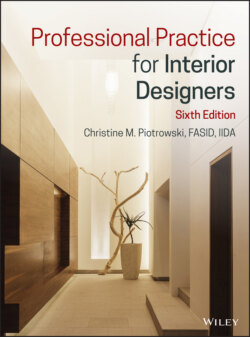Читать книгу Professional Practice for Interior Designers - Christine M. Piotrowski - Страница 148
HOW EMPLOYERS REVIEW RESUMES AND COVER LETTERS
ОглавлениеBetween posted and mailed resumes, business owners receive dozens if not hundreds of resumes and letters every week. Today, most resumes arrive via e‐mail or other online postings. Most often these come to the office without any job posting or announcement of any kind. Since those in charge of hiring are very busy, it is going to take some luck to get them to notice your inquiry. Today the reality is that with so many people applying via the Internet, it gets even harder to be noticed by the right people.
What is likely to catch their attention is something that is said in your e‐mail message or cover letter. In fact, unless the employer is actually looking for someone, they may not even read beyond that opening sentence or two. Here is once again where key words come into to play. A scanned page or the scanning software the company might be using will eliminate any correspondence that does not hit on some of the key words important to a particular firm or certainly an interior design firm.
Besides key words, what will get you noticed? Brief statements about skills, education, certifications, and relevant experience related to the job opening. Claims of accomplishment than seem unreasonable for the individual's apparent level of experience will be suspect. Of course, poor spelling, sloppy appearance, a “To Whom It May Concern” salutation, too many pages, or an obvious lack of skills top a long list of negatives.
One way to get positively noticed is commenting on how you heard about the company or job opening. Remember that a lot of jobs open up because of personal connections. If someone recommends that you contact an employer, let the hiring employer know whom it is you know that gave the recommendation. This is one situation where “who you know” can be a very positive advantage in job hunting.
Employers are impressed when an applicant has done some research about the firm. For example, craft objective, summary statements, and skills statements related to the work done by the firm and the job that you seek at the firm.
While employers most want to know how you can help this company, they also will want to get some idea of what you did for others. Be brief in your cover as your resume will fill in details. Be sure you are clear in your documentation about your employment history and skills. They will especially be impressed by comments that quantify your experience, as these will stand out.
You do not need to be one‐dimensional focused only on the profession to get a job today. Indicate involvement in community groups, other outside activities, travel out of the country, and language skills. This can be especially eye‐catching to firms doing international design work. Yet do not short change your successes in project management, profit making, or anything else indicating that you know how to achieve goals.
Finally, employers are also interested in skills in communication and ability to interact with clients. Designers do not just communicate through their drawings. Writing and verbal skills are at least equal in importance to technical skills for some positions, and may be more important for others. Be sure your social media presence is professional as well. Once again, always be truthful in what you include in job‐hunting documents, as untruths will be found out.
